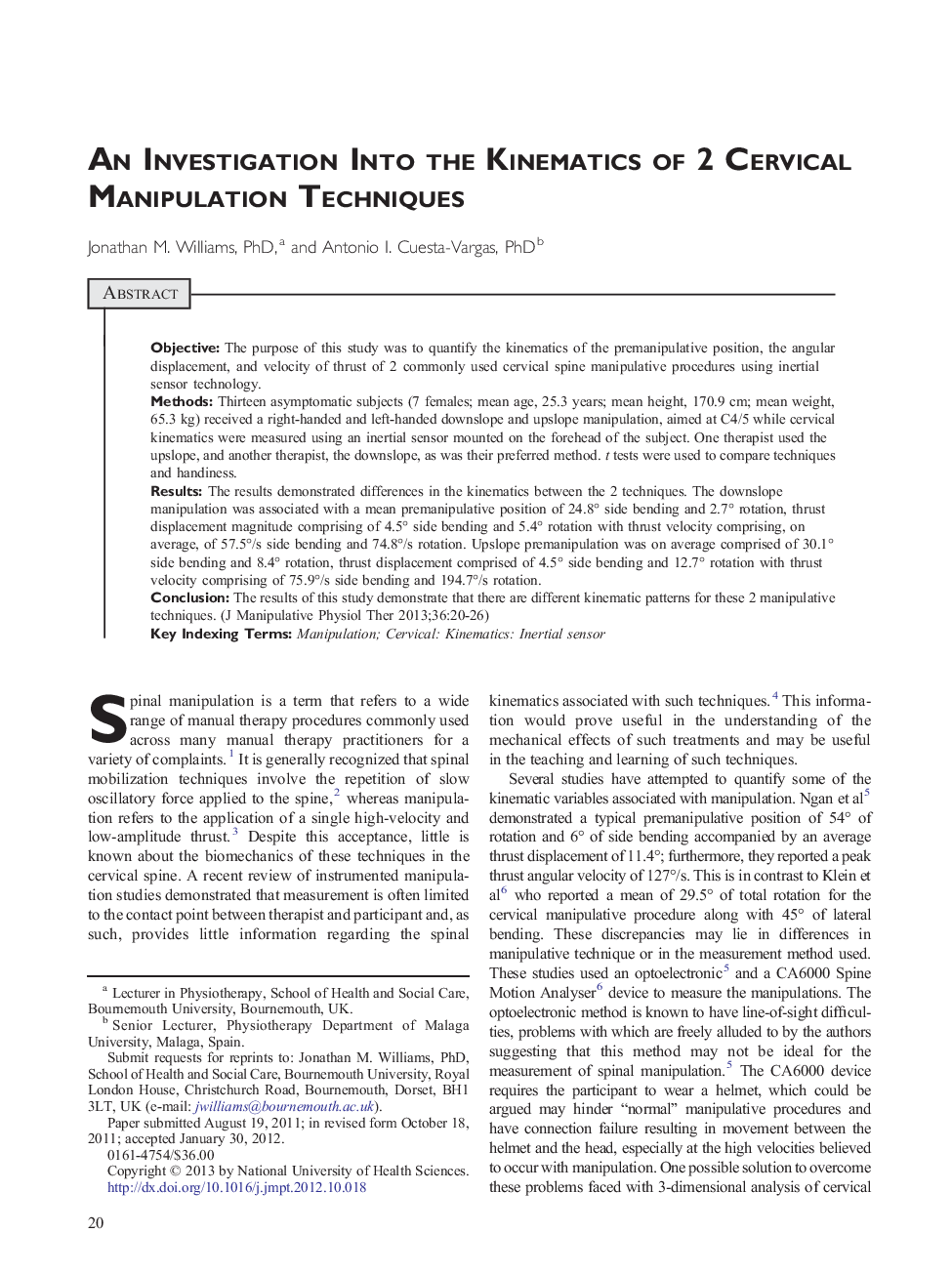| Article ID | Journal | Published Year | Pages | File Type |
|---|---|---|---|---|
| 2620537 | Journal of Manipulative and Physiological Therapeutics | 2013 | 7 Pages |
ObjectiveThe purpose of this study was to quantify the kinematics of the premanipulative position, the angular displacement, and velocity of thrust of 2 commonly used cervical spine manipulative procedures using inertial sensor technology.MethodsThirteen asymptomatic subjects (7 females; mean age, 25.3 years; mean height, 170.9 cm; mean weight, 65.3 kg) received a right-handed and left-handed downslope and upslope manipulation, aimed at C4/5 while cervical kinematics were measured using an inertial sensor mounted on the forehead of the subject. One therapist used the upslope, and another therapist, the downslope, as was their preferred method. t tests were used to compare techniques and handiness.ResultsThe results demonstrated differences in the kinematics between the 2 techniques. The downslope manipulation was associated with a mean premanipulative position of 24.8° side bending and 2.7° rotation, thrust displacement magnitude comprising of 4.5° side bending and 5.4° rotation with thrust velocity comprising, on average, of 57.5°/s side bending and 74.8°/s rotation. Upslope premanipulation was on average comprised of 30.1° side bending and 8.4° rotation, thrust displacement comprised of 4.5° side bending and 12.7° rotation with thrust velocity comprising of 75.9°/s side bending and 194.7°/s rotation.ConclusionThe results of this study demonstrate that there are different kinematic patterns for these 2 manipulative techniques.
